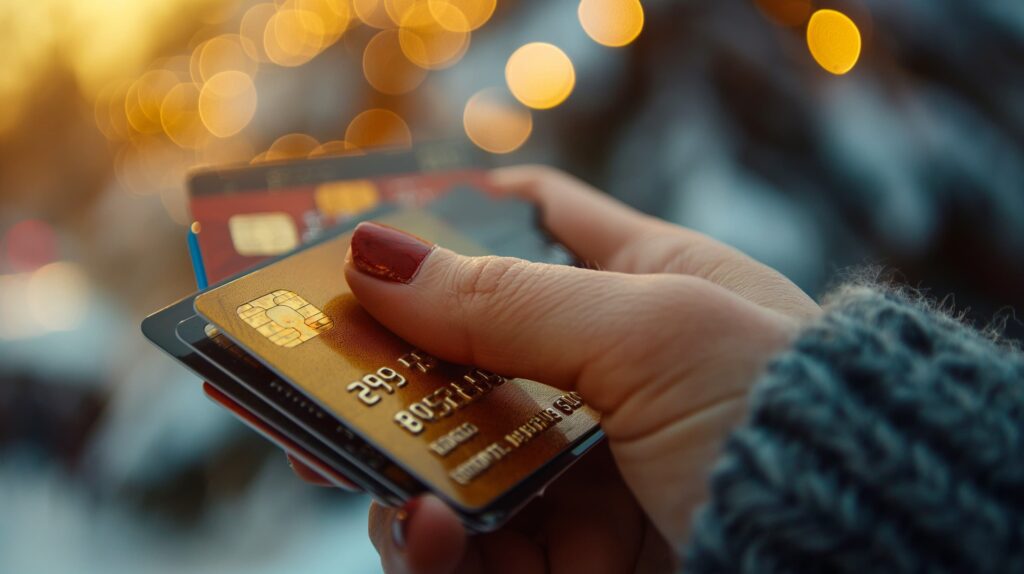Imagine waking up to a flat tire or an urgent expense—no stress, just a sense of readiness. That’s the quiet power an emergency fund brings into daily routines.
Building an emergency fund means more than numbers on a spreadsheet. It’s about resilience during setbacks and independence when life veers off course—traits anyone can tap into, step-by-step, starting today.
Settle in for a deeply practical, judgment-free roadmap. We’ll cover exactly how to launch, grow, and protect your emergency fund—no jargon, just real-world tips you can start right away.
Pinpointing Your Starting Line: Assessing Today’s Financial Reality
Clarity about your current money situation puts you in control from the very first step. Start your emergency fund journey right by gathering accurate numbers before you try new habits.
Open your banking app or grab a notepad. List every inflow and outflow for the month. Honesty here sets a strong foundation—think of it as prepping a canvas before beginning a painting.
Mapping Monthly Essentials and Discretionary Spending
Highlight rent, groceries, and bills you always pay—these are your essentials. Add up their amounts for a total. Next, flag purchases you can pause, like streaming subscriptions or snacks.
Vividly see where each dollar goes by grouping expenses. This visual lets you spot drips and leaks that add up. When you spot $20 here, $50 there, changes feel more doable and less daunting.
With these categories in front of you, subtract non-essentials. This process frees up room to start your emergency fund without feeling squeezed or making huge sacrifices all at once.
Quick Win: Finding Immediate Savings Opportunities
Scan your list for small, predictable expenses that add up—think coffee runs or unused gym dues. Mark which ones you could redirect into your emergency fund for instant progress.
This isn’t about self-denial; it’s trimming what you won’t miss. For example, swapping two cafe visits a week for home brews reroutes $20 monthly toward your goal with nearly zero pain or change to your lifestyle.
Treat these early wins like leveling up in a game: visible progress builds momentum. The money you free up here lays the first brick for your emergency fund, showing tangible results fast.
| Essential Cost | Non-Essential Cost | Monthly Total | Quick Win Potential |
|---|---|---|---|
| Rent $1200 | Coffee $40 | $1240 | Switch to home brewing, save $30 |
| Groceries $400 | Streaming $20 | $420 | Pause subscription, save $20 |
| Utilities $150 | Dining out $80 | $230 | Limit outings, save $50 |
| Insurance $100 | Gym $30 | $130 | Cancel unused, save $30 |
| Phone $60 | Snack runs $45 | $105 | Prep snacks, save $35 |
Zeroing In: Setting a Personalized Emergency Fund Target
When you define a specific dollar amount for your emergency fund, you build trust in the system. Guesswork fades away, and clear goals make saving efficient and motivating.
The classic advice: aim for three to six months of essentials. Let’s break down what that covers for your life instead of relying on generic formulas.
Projecting Realistic Monthly Minimums
List out those essential expenses mapped in the previous section. Multiply your total by three, then by six. This sets your minimum and stretch target so you know the exact numbers to pursue.
Be sure to focus on bare bones—housing, utilities, food, transport. Leave out luxury and rare splurges. For example: a $2,000 monthly minimum means an emergency fund target of $6,000–$12,000 for peace of mind.
- Set a three-month base target—use only minimum essentials for confidence.
- Set a six-month stretch target—for extra buffer and deep flexibility.
- Write both numbers down; seeing them makes progress trackable.
- Adjust targets as your life or income changes—no guilt, just adapt.
- Keep targets realistic so you won’t quit; every dollar adds up to real safety over time.
Progress always beats perfection here. Each portion you save makes emergencies less disruptive, ensuring your emergency fund starts working for you immediately—even before it “feels” full.
Deciding Your Timeline to Save
Now, spread that target over realistic months. For example, $6,000 over 18 months requires about $334 per month. Shorter or longer timelines are fine—speed up or slow down as needed without losing steam.
Visualizing your timeline helps transform an intimidating lump sum into achievable monthly actions. Celebrate every milestone by marking your progress—simple charts or even a sticky note can make a huge difference.
- Divide your full target by the months you want to save it in.
- Write the monthly savings down for visual motivation.
- Adjust if your income shifts—life changes, and so should your timeline.
- Count even small victories forward; momentum matters most.
- Share your goals with a friend for honest celebrations and gentle nudges.
Taking control of your timeline keeps the process sustainable—so your emergency fund always moves, no matter your starting point or finish line.
Lifting Off: Building Consistent Contributions Each Month
Getting automatic deposits rolling means your emergency fund grows without constant reminders or willpower battles. Reliability trumps dollar amounts early on, so routine matters most.
Automate, Then Forget: Leveraging Technology for Consistency
Set up direct deposit or autopay from your checking to your emergency fund. Even $20 weekly builds up quickly with zero effort or temptation to skip a month.
Apps and online banking features simplify this in minutes. Schedule recurring transfers for payday or whenever income hits—making saving first, not last, a breeze.
The less you have to think about logistics, the more likely your fund grows—think of it like fitness: small actions, repeated, add up to visible results no one can ignore.
Micro-Saving: Harnessing Spare Change for Invisible Growth
Round up daily purchases, transferring “loose change” into your emergency fund. Apps and card features offer this and make it feel invisible—$1, $2, $3 at a time adds up faster than most notice.
Example: A $1.45 “round up” from a $3.55 coffee drops straight into your fund. In a month, dozens of micro-moves could cover a small bill or surprise fee before you even realize it.
When paired with larger, regular transfers, micro-saving becomes a powerful sidekick—delivering little boosts with zero hassle, never once cutting into the comfort of your routine or budget.
Dodging Setbacks: Keeping Your Emergency Fund Untouchable
Separating your emergency fund from daily spending shields it from casual withdrawals. Out of sight curbs temptation and preserves your progress during tough moments—you protect the fund’s purpose at all costs.
Opt for a dedicated savings or high-yield account, not a checking account you regularly use. This extra “friction” means you have to pause and remember the emergency fund goal before dipping in.
Identify Real Emergencies: Building a Use-Only-for-This Mindset
Mandate that your emergency fund only covers true unplanned expenses—job loss, sudden car repairs, urgent home fixes—not regular bills or wishlist shopping.
If you’re unsure, ask: “Would I have predicted this expense last month?” If the answer’s no and it threatens your essentials, your emergency fund is the right tool.
This rule stays flexible as your life changes—focus on maintaining strict access to your emergency fund, but give yourself grace as new emergencies show up over the years.
Avoiding Common Potholes: Quick Checkpoints Before Withdrawing
Pause before transferring money from your emergency fund. Wait one full day unless the situation is urgent. Use this time to review receipts or talk with a trusted friend.
Never use the fund for predictable expenses like annual bills or planned travel. If it’s an impulse or can wait a week, challenge yourself to cover it another way.
This mini-delay shrinks regret. Emergencies feel urgent, but making withdrawal a deliberate choice safeguards your fund. If the need truly qualifies, use your resources and reset your goal without guilt.
Boosting Growth: Multiple Ways to Take Your Emergency Fund Further
When your emergency fund hits stride, extra strategies help it thrive. Use smarter storage methods and creative sources to keep the momentum strong even after hitting your early goals.
High-Yield Accounts: Making the Most of Your Savings
Move your fund from a standard savings to a high-yield account when your balance grows. The interest doesn’t make you rich, but free money is better than none.
Check for low fees and easy access, but ensure it requires two-step transfers—you want growth, not frequent withdrawals. Review rates every year so your emergency fund isn’t left behind as markets change.
Label this account “Emergency Only” within your banking app or dashboard for a strong mental cue. You want to visually reinforce that this money has a single, clear purpose—unplanned needs only.
Income Surges: Channeling Bonuses and Unexpected Wins
Whenever you receive a tax refund, work bonus, or cash gift, immediately send a portion to your emergency fund. Even a 20% slice makes huge dents in your savings goals.
Treat windfalls as “found money”—decide upfront the split between fun, debts, and emergencies to remove temptation and grow the fund quickly. It speeds up timelines with minimal lifestyle changes.
Each unexpected deposit into your emergency fund shortens your “months saved” target faster than daily budgeting ever could, moving you closer to true peace of mind.
Emergency Fund Confidence: Living Safer, One Step at a Time
Starting from zero isn’t a setback—it’s an open runway. Building an emergency fund, brick by brick, lays down resilience you can feel every day, even before you reach your full target.
The impact ripples throughout your life: everyday stress shrinks, options widen, and bumps in the road seem smaller. The emergency fund you build today is a shield you’ll lean on tomorrow.
Begin with one small win. Let your growing fund quietly rewrite how you handle surprises. With a system in place, emergencies fade from panic to manageable, and you keep steering your own journey, every single month.


